 |
a video illustrating the program (youtube link) |
Realization of an interactive physics engine and creation of a game based on this engine. Particles represent small units of matter. Every physical model is constructed upon the use of particles, along with another concept, that is: the Link. A link can be seen as a constraint between two particles. Links are to maintain some particles at a certain minimum or maximum distance, but in order to make them react in a more or less “realistic” way, they should not only modify the particles’ positions, but also their speeds. This means links will be responsible for some acceleration and deceleration of the particles; thus they can be regarded as exerting a force on these particles
 |
a video illustrating the program (youtube link) |


Simulation of predator/victime roles (sheep and wolves) on different terrain. Includes different map generators (interactive user generated as well as random with probabilistic models).
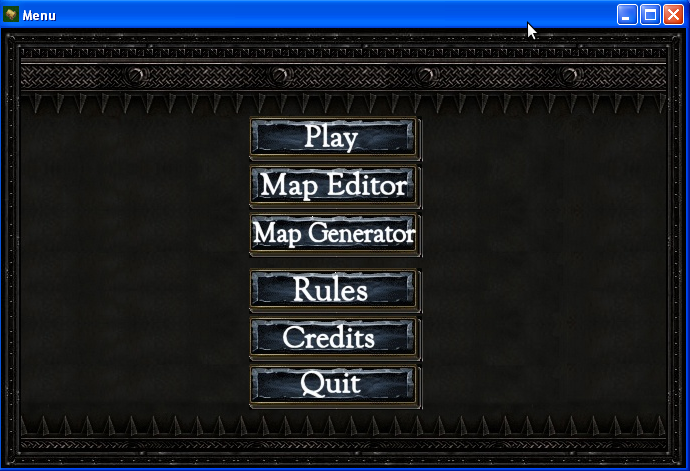
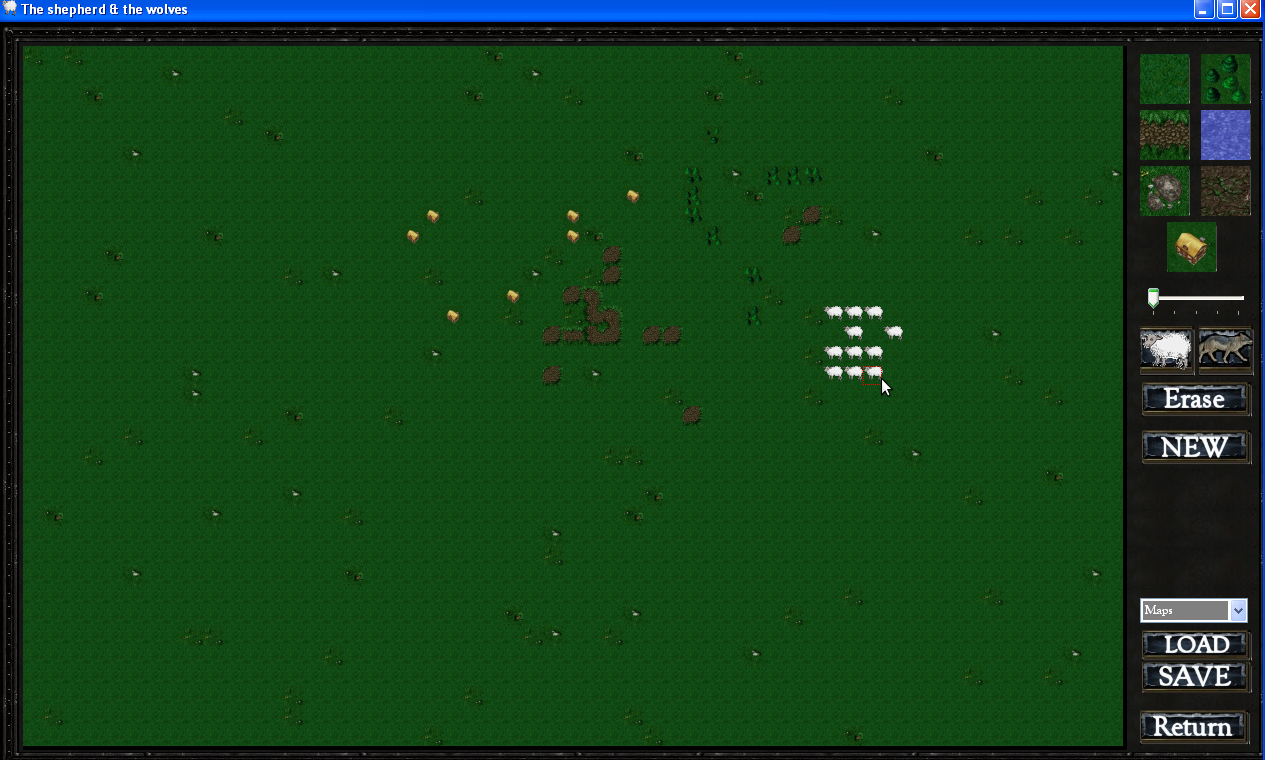
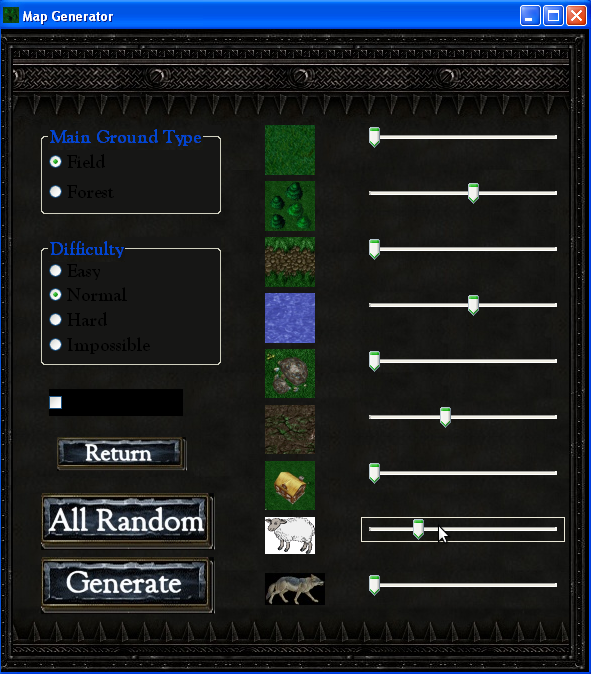
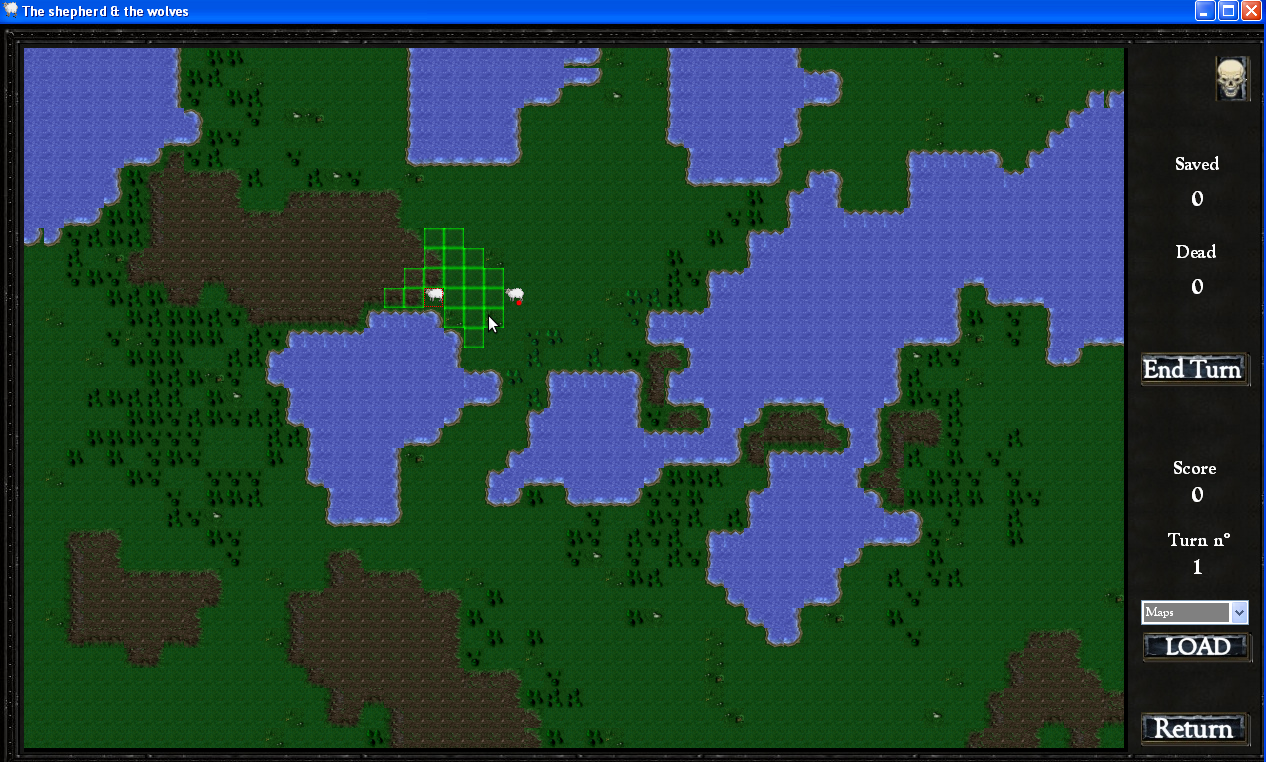
A tower defense game featuring a shortest path A* algorithm.
 |
a video illustrating the program (MPEG 4) |

A mini golf game using different (and possibly magnetic) balls and magnets.
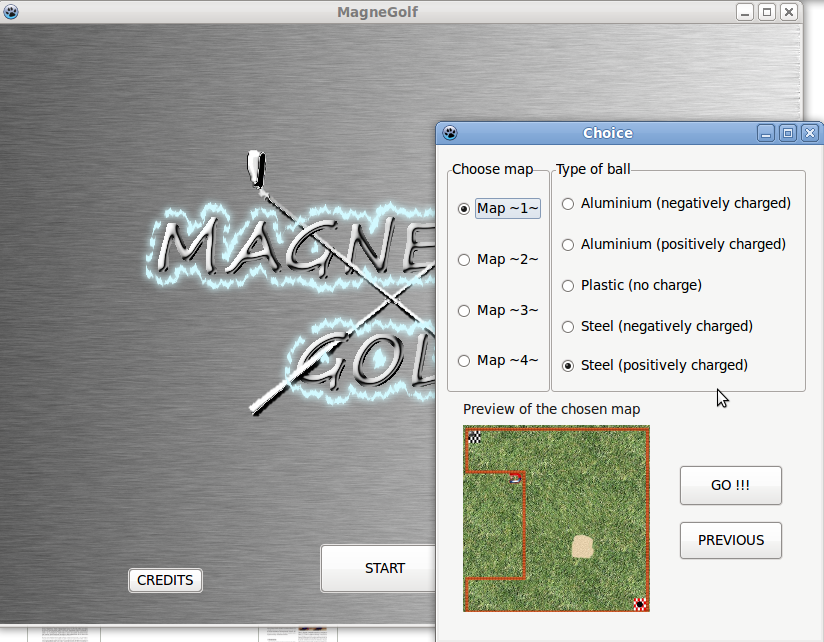
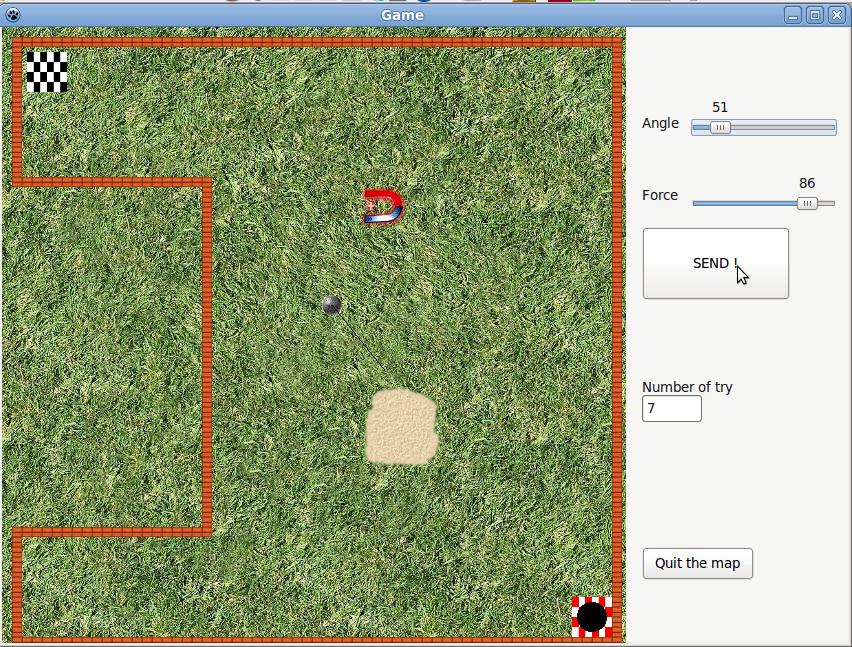
Simulation of mazes with different types of mazes. Interactive solving by the user or automatic solving by the computer.

Simulation of amoeba populations including aggregation modeling.
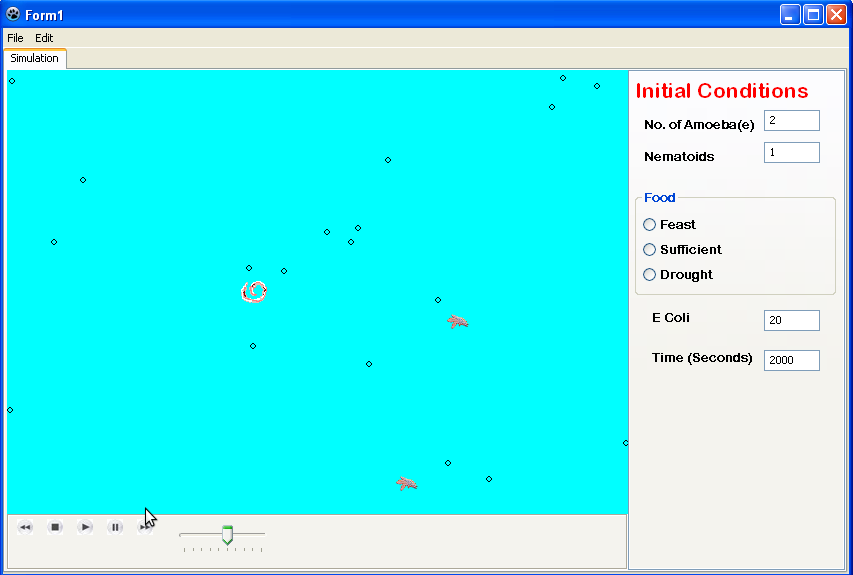
Simulation of ant movement including pheromone modeling
